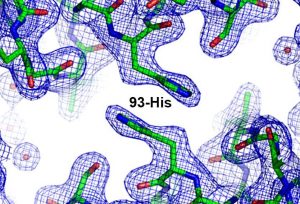This Week in PLOS Pathogens and NTDs: Onchocerciasis Disruption in Mexico, Ae. albopictus and Wolbachia, Foot-and-Mouth Vaccines, the Impact of KdpD/KdpE and More

New articles publishing in PLOS NTDs this week:
The newly completed genome sequence of S. haematobium together with advanced genetic manipulation technologies are providing new insights that could lead to the development of the next generation of tools for eliminating this ancient scourge. Drs. Peter Hotez and Paul Brindley discuss the advances of the past two years towards a new era of S. haematobium research.
Ae. albopictus has expanded its range throughout the tropics and into some temperate regions in recent decades from its native South East Asia, carrying with it viruses including dengue and chikungunya. Dr. Marcus Blagrove and colleagues have conducted experiments with Ae. albopictus that show this vector, when trans-infected with Wolbachia, loses the ability to transmit dengue and chikungunya without any detectable fitness costs.
The Southern Chiapas focus of onchocerciasis in Mexico represents one of the major foci of this parasite in Latin America, but the absence of infective larvae in its black fly vector and reduction of exposure to new infections indicate that transmission has been interrupted. In this study, Dr. Rodriguez-Perez and colleagues present entomological and epidemiological assessments from this region to demonstrate interruption over this geographically large area.
New articles publishing in PLOS Pathogens this week:
KdpD/KdpE has recently been identified as an adaptive regulator involved in the virulence and intracellular survival of pathogenic bacteria. In this Review, Freeman and colleagues summarize evidence that KdpD/KdpE production is correlated with enhanced virulence and survival, that it regulates a range of virulence loci through direct promoter binding, and that its regulation responds to virulence-related conditions.
Foot-and-mouth disease remains a major plague of livestock, but current inactivated virus vaccines require expensive high containment facilities for their production and maintenance of a cold chain for their activity. Here, Porta and colleagues address both of these major drawbacks by developing methods to efficiently express recombinant empty capsids and enhancing capsid stability by incorporating a rationally designed mutation.
Despite the prevalence and severity of dengue virus (DENV), there are no approved vaccines or antiviral therapeutics available. In this paper, Morrison and colleagues demonstrate the requirement of a host factor, UBR4 a 600-kDa, for DENV to overcome the antiviral interferon response. They suggest that this might be important for the design of specific DENV inhibitors that prevent the virus from evading innate immunity.
